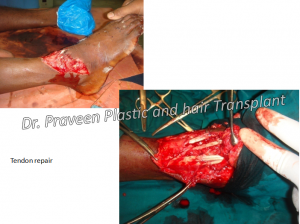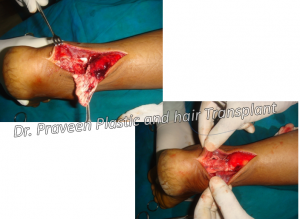CARPEL TUNNEL SYNDROME
The median nerve, which controls sensation and movement in the thumb and first three fingers, runs through this passageway along with tendons to the fingers and thumb. When it’s pinched or compressed, the result is numbness, tingling, weakness, or pain in the hand, called carpal tunnelsyndrome.
Tumors or cysts in the wrist, on the tendons, or in the carpal tunnel can also cause CTS. One of the first symptoms of CTS is gradual tingling and numbness in the areas supplied by the median nerve. This is typically followed by dull, vague pain where the nerve gives sensation in the hand.
In surgery, your surgeon makes a incision in the palm of your hand over the carpal tunnel and cuts through the ligament to free the nerve. This procedure may also be conducted using a smaller incision, which may reduce the risk of complications.
FOR MORE DETAILS :
https://en.wikipedia.org/wiki/Carpal_tunnel_syndro
A Dupuytren’s contracture is a localized formation of scar tissue around the tendons that flex the fingers beneath the skin of the palm of the hand. The scarring accumulates in a tissue (palmar fascia) that normally covers the tendons that pull the fingers to grip. As a Dupuytren’s contracture progresses, more of the fascia becomes thickened and shortened. Dimpling and puckering of the skin over the area eventually occurs and ultimately can make it impossible to fully extend the fingers (as in laying the hand flat on a tabletop).
with advanced disease, limited function and progressing disease is to surgically remove the tissue in your palm affected by the disease. The main advantage to surgery is that it results in a more complete and longer-lasting release than that provided by the needle or enzyme methods. The main disadvantages are that physical therapy is usually needed after surgery, and recovery can take longer.
For more details
https://en.wikipedia.org/wiki/Dupuytren%27s_contracture
Trigger Finger
Trigger Finger, also known as stenosing tenosynovitis or flexor tendonitis, is a condition where one of the fingers or thumb of the hand is caught in a bent position. The affected digit may straighten with a quick snap, similar to pulling and releasing the trigger on a gun, hence the name trigger finger.
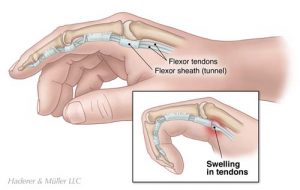
Commonly reported symptoms associated with trigger finger include the following:-
- Bent finger suddenly pops out and straightens
- Finger movement creates a “popping” or “clicking” sound or sensation
- Finger feels stiff and sore
- Finger becomes bent with inability to straighten
- Symptoms are worse in morning.
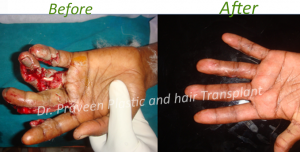
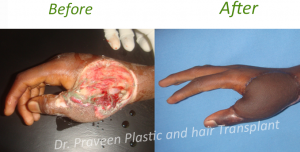

If conservative treatment options fail to resolve the condition and symptoms persist for 6 months or more and your quality of life is adversely affected, your surgeon may recommend you undergo a percutaneous trigger finger release surgical procedure to release the tendon. This surgery is usually performed in an operating room under local or regional anaesthesia on an outpatient basis as day surgery. Your surgeon makes one small incision, about inch long, to the affected finger area. The surgeon then releases the tight portion of the flexor tendon sheath. The incision is then closed with a couple sutures and covered with a sterile dressing.
For more details
https://en.wikipedia.org/wiki/Trigger_finger
Congenital Hand Deformities
Congenital anomalies are deformities that are present at birth. Any type of deformity in a newborn infant can become a challenge for the child as he or she grows. Hand deformities can be particularly disabling as the child learns to interact with the environment through the use of his or her hands.
Dr Praveen ha good experience on congenital pediatric hand deformities like..
- Syndactyly
- Polydactyly
- Symbrachydactyly
- Constriction Band Syndrome
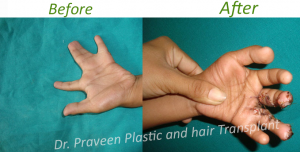
Tendor Repair
